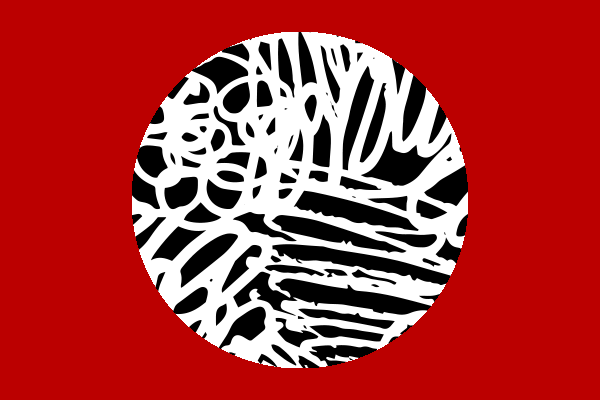Research Spotlight: Wendy Hesford

Each month, the Communications Team reaches out to members of the Department of English faculty and asks them to elaborate on a current research or creative project they are working on or have recently completed. For this month, we asked Professor Wendy S. Hesford about her research. Hesford’s research and teaching interests include human rights rhetoric, writing and critical literacy, global media, visual rhetoric and transnational feminist studies. Hesford is primarily interested in rights-based approaches to education geared toward social justice and transformative understandings of our geopolitical and historical place in the world. Among the vital functions of human rights literacy, she argues, is its important role in exposing the violence of representation, revealing hidden, repressed and silenced stories. Yet human rights and the notion of literacy as a human right are also entrenched in the history and legacy of the colonial enterprise. Hesford’s transnational rhetorical orientation therefore emphasizes the paradoxical deployment of human rights across the globe as well as how cultural reading, writing and viewing practices function as pedagogical surrogates for the legal advancement of human rights.

In your own words, as the expert that you are, can you provide an overview of your project?
My latest book project Violent Exceptions: Children’s Human Rights and Humanitarian Rhetorics, forthcoming from Ohio State University Press, turns to the figure of the child-in-peril in contemporary international and American law ad political discourse. Violent Exceptions focuses on the global trafficking of iconic images and life-stories of children and youth in crisis that have had far-reaching political and regulatory effects. Violent Exceptions is not simply a call for more accurate representations of children’s rights and rights violations but rather an analysis of why and how representations matter.
Violent Exceptions argues that the figure of the child-in-peril serves as a symbolic means to mediate the imperatives of state power and humanitarian governance. For example, widely circulated images of Syrian children who were victims of the April 2018 chemical attacks by President Bashar al-Assad’s government prompted President Trump to authorize a cruise missile strike against the Syrian government’s air base from where the attack had been reportedly launched. President Trump’s advisors reported that two photographs in particular persuaded the President to act: an image of a “young listless children being splashed with water in a frantic attempt to cleanse them of the nerve agent, and an image of an anguished father holding twin babies, swathed in soft white fabric, positioned to death” (Chicago Tribune). The White House’s construal of the role of these two photographs positioned the President as the moral witness and the United States as the exceptional moral regime. The Trump administration’s humanitarian framing of its military response to Assad’s chemical weapon attack against Syrian children, and yet its concurrent upholding of Executive Order #13769, which denies the entrance of Syrian refugees, including child refugees, fleeing Assad’s and ISIS’s violent attacks, illustrates how humanitarian and national security directives conspire to secure the vision of the United States as an exceptional nation.
In contrast to the humanitarian narratives and images of Syrian child refugees that have dominated U.S. mainstream media, the anti-immigration movement in the U.S. construes child migrants and children of undocumented parents as “foreign” contaminants, anchor babies and parasites feeding off of the nation-state. With few exceptions, including the latest outcry over the Trump administration’s zero-tolerance immigration policy, which has led to the separation of thousands of children from their parents crossing the US-Mexico border, we have not seen the same humanitarian focus in support of Central American children and their families crossing the border to escape violence.
Exceptional logics, laws, and outlooks have a particular impact on how minority children are represented and how governments respond to children in crisis. In the post-Ferguson era, humanitarian and rights perceptions require, and problematically so, that the Black body occupy the social position of absolute victim, a recognition afforded only to the youngest of Black children and even then only temporarily. For example, Sincere Smith was for a short time the face of the Flint water crisis at two-years old, but at four-years old, when he and his mother were no longer residents of Flint, they were deemed ineligible for the government assistance offered to Flint residents afflicted by the contaminated water supply.
Violent Exceptions investigates how humanitarian protectionist discourse privileges certain children’s experiences and rights over others. The project focuses on the racialization of childhood innocence and the criminalization of Black childhood in US politics and culture. To elucidate the differential recognition of racialized childhoods in US domestic and foreign politics, I juxtapose cultural and legal depictions of former child soldiers in Africa, who under international human rights law are viewed as both human rights victims and witnesses, and the withholding of these roles and rights from Black youth in the United States, especially victims of police profiling, vigilantism and/or state-violence. The criminalization of Black children, the debilitating logics of racism, and the relative absence of attention to the human rights of children of color in the US points to the fact that it is far more typical for Black children to achieve iconicity post mortem.
Cultural and legal differences in the treatment of children and youth are also strikingly apparent in the challenges that LGBTQ youth face in obtaining asylum in the US and that transgender children face in accessing public facilities in US public schools. Hence, my archive also includes an analysis of the case at the center of the documentary film Growing Up Coy, about a 6-year-old transgender child who was banned from using the girl’s bathroom in a local school in Colorado. Growing Up Coy reveals the complicity of discourses of child protection and childhood innocence in rendering LGBTQ children both hyper-visible in the public sphere and at times illegible in the legal sphere.
Now, could you shorten this description into one sentence that uses accessible language?
Violent Exceptions: Children’s Human Rights and Humanitarian Rhetoric will be the first book-length rhetorical study of the concept of exceptionality as it relates to the figure of the child-in-peril and childhood innocence in U.S. and international imaginaries.
Please elaborate on the methodology of your analysis.
My method of analysis might be characterized as rhetorical genealogy. Rhetorical genealogy considers how discourses emerge, how they are mobilized, by whom, within what contexts and with what effects. Rhetorical genealogy is about historical legacies and contingencies: how discourses get traction and become attached to particular events and phenomena. A genealogical approach also does not accept universal categories or normative judgments as fixed but examines the value attributed to them within particular contexts. Violent Exceptions attends not only to rhetoric as a material force but focuses on the material and discursive as co-constitutive. Rhetorical genealogy therefore should not be understood as minimizing attention to the material world but rather as engaging the material intimacies between discourses and practices. Violent Exceptions aims to provide key insights for humanities scholars working in areas that are often considered the domain of political sciences and lawyers alone.
